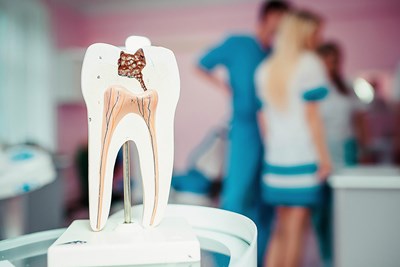When gum disease is not treated in the earl stage known as gingivitis, it progresses into a serious condition called periodontitis. In this advanced stage the bacterial infection spreads from your gums to the supporting bone and deeper into the tissue that surround your teeth. Curing periodontitis can be difficult but there are several options for trying.
- Scaling and root planing: Scaling and root planing is a type of deep cleaning. It involves removing plaque and then smoothing areas of the gums where it can develop easily.
- Pocket reduction: If new pockets of space have developed because of periodontitis, pocket reduction may be necessary for curing it. This procedure involves folding back the gum tissue in order to eliminate infectious bacteria. The gum tissue is then reattached to healthy bone.
- Gum grafts: If your periodontal disease has caused gum recession, exposed roots can be covered with gum grafts. Gum tissue is taken from the roof of your mouth or from a donor source and attached to the roots of one or more of your teeth.
- Regenerative procedures: Advanced periodontal disease can cause bone loss or damage. Bone grafting, a surgical procedure, can stimulate the regrowth of bone in damaged areas.
- Good oral hygiene: Once you have been cured of periodontal disease, you'll want to make sure it doesn’t return. This means brushing and flossing your teeth regularly and seeing your dentist for checkups.
Have more questions? See more answers from Alot.



